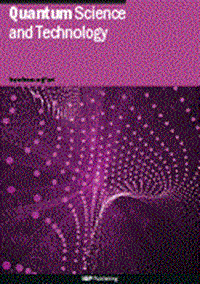Compressed-sensing Lindbladian quantum tomography with trapped ions
IF 5
2区 物理与天体物理
Q1 PHYSICS, MULTIDISCIPLINARY
引用次数: 0
Abstract
Characterizing the dynamics of quantum systems is a central task for the development of quantum information processors (QIPs). It serves to benchmark different devices, learn about their specific noise, and plan the next hardware upgrades. However, this task is also very challenging, for it requires a large number of measurements and time-consuming classical processing. Moreover, when interested in the time dependence of the noise, there is an additional overhead since the characterization must be performed repeatedly within the time interval of interest. To overcome this limitation while, at the same time, ordering the learned sources of noise by their relevance, we focus on the inference of the dynamical generators of the noisy dynamics using Lindbladian quantum tomography (LQT). We propose two different improvements of LQT that alleviate previous shortcomings. In the weak-noise regime of current QIPs, we manage to linearize the maximum likelihood estimation of LQT, turning the constrained optimization into a convex problem to reduce the classical computation cost and to improve its robustness. Moreover, by introducing compressed sensing techniques, we reduce the number of required measurements without sacrificing accuracy. To illustrate these improvements, we apply our LQT tools to trapped-ion experiments of single- and two-qubit gates, advancing in this way the previous state of the art.捕获离子的压缩传感Lindbladian量子层析成像
描述量子系统的动力学特性是量子信息处理器(QIPs)发展的核心任务。它可以对不同的设备进行基准测试,了解它们的特定噪声,并计划下一次硬件升级。然而,这项任务也非常具有挑战性,因为它需要大量的测量和耗时的经典处理。此外,当对噪声的时间依赖性感兴趣时,由于必须在感兴趣的时间间隔内重复执行表征,因此存在额外的开销。为了克服这一限制,同时根据噪声的相关性对学习到的噪声源进行排序,我们将重点放在使用Lindbladian量子断层扫描(LQT)对噪声动力学的动力发生器进行推理上。我们提出了两种不同的LQT改进,以减轻以前的缺点。在现有qip的弱噪声条件下,我们将LQT的极大似然估计线性化,将约束优化问题转化为一个凸问题,以减少经典计算量并提高其鲁棒性。此外,通过引入压缩感知技术,我们在不牺牲精度的情况下减少了所需测量的数量。为了说明这些改进,我们将LQT工具应用于单量子比特和双量子比特门的捕获离子实验,以这种方式推进了以前的技术水平。
本文章由计算机程序翻译,如有差异,请以英文原文为准。
求助全文
约1分钟内获得全文
求助全文
来源期刊

Quantum Science and Technology
Materials Science-Materials Science (miscellaneous)
CiteScore
11.20
自引率
3.00%
发文量
133
期刊介绍:
Driven by advances in technology and experimental capability, the last decade has seen the emergence of quantum technology: a new praxis for controlling the quantum world. It is now possible to engineer complex, multi-component systems that merge the once distinct fields of quantum optics and condensed matter physics.
Quantum Science and Technology is a new multidisciplinary, electronic-only journal, devoted to publishing research of the highest quality and impact covering theoretical and experimental advances in the fundamental science and application of all quantum-enabled technologies.
 求助内容:
求助内容: 应助结果提醒方式:
应助结果提醒方式:


